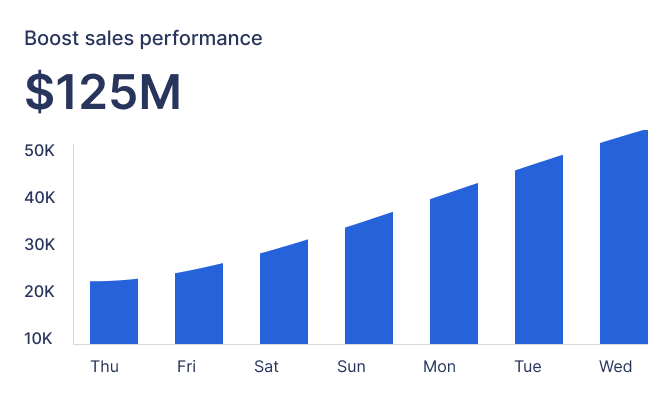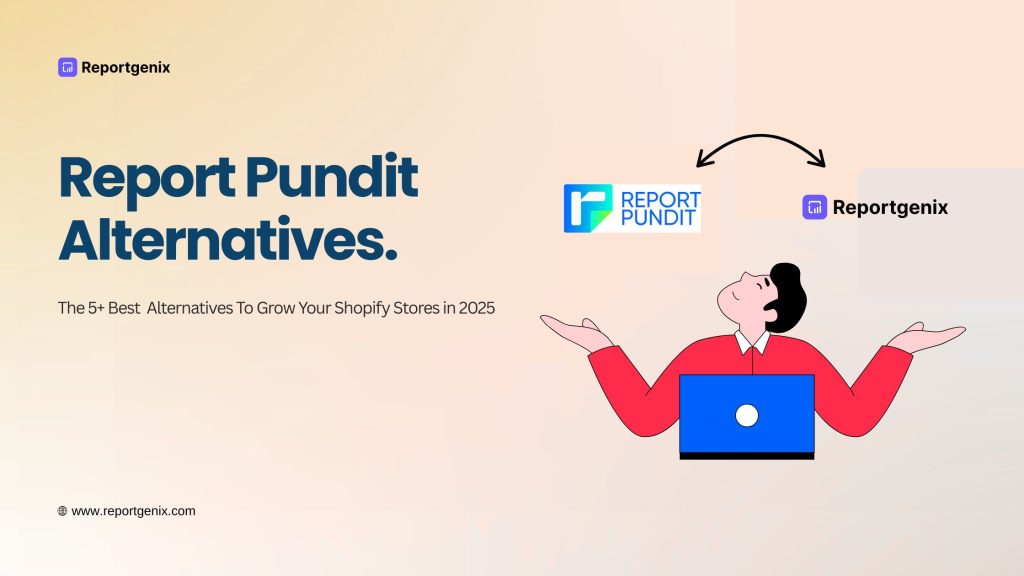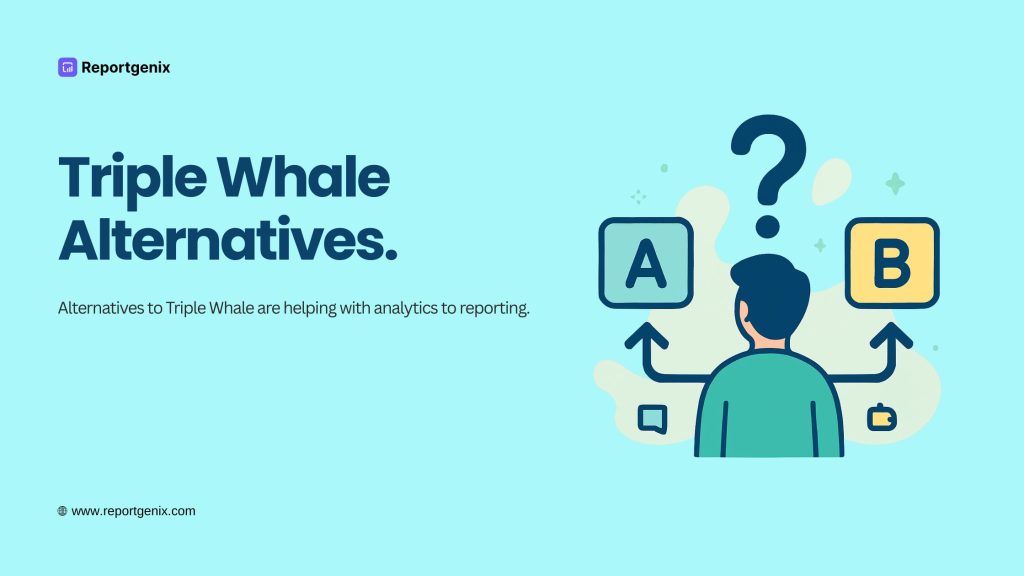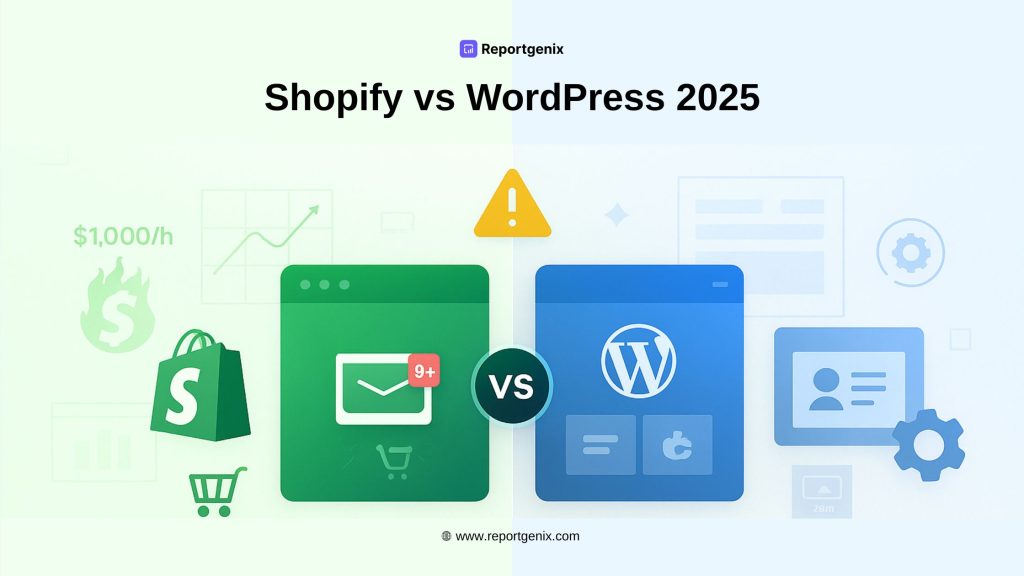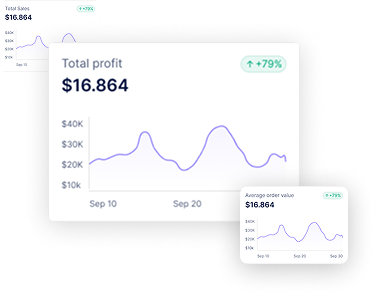Holiday E-commerce Sales 2025: Strategies for Shopify Success
Get Summary On:
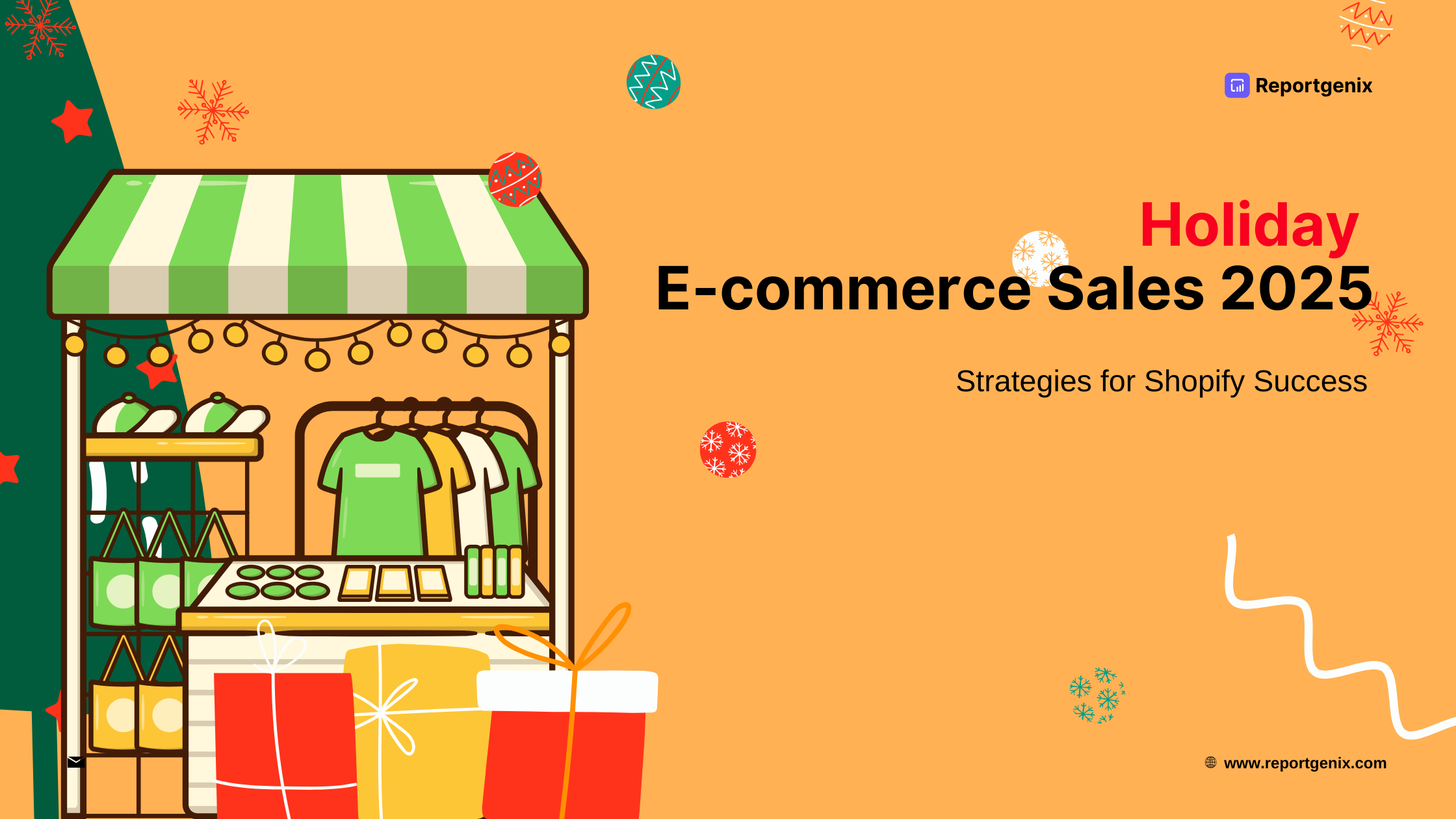
During the holiday ecommerce sales in 2025 are poised to see a remarkable increase, driven by strategic Shopify holiday marketing strategies. The festive season is the biggest sales season for e-commerce companies as they contribute to a large portion of the annual turnover.
Black Friday, Cyber Monday and the weeks leading up to Christmas and New Year are perhaps the most attractive times for online retailers to increase sales, customer base, and brand awareness.
In this article, we’ll explore actionable Shopify holiday marketing strategies, emerging trends, and expert insights to ensure your e-commerce store thrives during the holiday season in 2025
How to do Effective Shopify Holiday Marketing Strategies to Leverage New Year Sales?

As the busy holiday season approaches, holiday shoppers are eager to find the best holiday deals and holiday gifts. To effectively boost sales during this period, it’s crucial to prepare your e-commerce store for holiday e-commerce readiness.
Implementing multiple Shopify holiday marketing strategies can maximize engagement and sales. For instance, consider leveraging social media ads to promote special offers that align with Shopify holiday marketing strategies.
Additionally, incorporating user-generated content into your Shopify holiday marketing strategies can enhance credibility and encourage conversions.
Implementing effective Shopify holiday marketing strategies drives traffic to your online store, especially during key events like Black Friday and Cyber Monday, New Year.
Offering enticing discount offers, such as free shipping or special gift card promotions, can enhance your product pages and simplify the cart process for customers.
New Year sales remain pivotal events for e-commerce. To maximize your impact:
- Offer Exclusive Deals: Provide early-bird discounts and limited-time offers.
- Build Hype in Advance: Use email campaigns, social media teasers, and SMS marketing.
- Optimize Your Website for Speed and Performance: Ensure seamless navigation to increased traffic.
- Leverage Bundling and Upselling: Encourage larger cart sizes with bundle deals.
- Implement Retargeting Campaigns: Re-engage visitors who abandoned their carts.
By preparing early and using data-driven Shopify holiday marketing strategies, your business can capture more attention and sales during these peak days.
What Trends to Expect in Holiday Ecommerce Sales in 2025?
As we look ahead to 2025, several trends are expected to shape the holiday ecommerce landscape. With holiday ecommerce readiness becoming critical, ecommerce brands must ensure their online store is ready for the year’s holiday season. Strategies to boost sales will focus on optimizing the ecommerce site for smooth customer experiences, particularly since sales were made on mobile devices. The rise of Shopify audiences will also play a significant role in targeting potential customers effectively.
Offering personalized discounts can enhance your Shopify holiday marketing strategies and drive conversions.
Tracking the performance of your Shopify holiday marketing strategies is key to measuring success.
The e-commerce landscape evolves each year, and 2025 will bring exciting new trends:
- AI-Powered Personalization: Tailored product recommendations based on browsing behavior.
- Sustainable Shopping: Eco-friendly packaging and carbon-neutral shipping options.
- Mobile Commerce Dominance: More customers shopping via mobile apps and websites.
- Voice Search Optimization: Integration of smart speakers in holiday shopping.
- Enhanced Payment Options: Buy Now, Pay Later (BNPL) services gaining traction.
Staying ahead of these trends will give your store a competitive edge.
Continuous improvement of your Shopify holiday marketing strategies can lead to sustained growth and customer loyalty.
How Will the 2025 Holiday Forecast Impact Your Sales?
Utilizing data-driven insights can enhance your Shopify holiday marketing strategies for improved performance.
As we look ahead to the 2025 holiday sales strategies forecast, businesses must understand how this will impact their sales channel. With online sales projected to see a significant boost, it’s essential to ensure your ecommerce store is ready for holiday purchases. Leveraging tools like Shopify Flow and Shopify Plus can help Shopify admin streamline operations, making your online store ready for increased demand.
As online sales increased by 4.9% last year, this trend is expected to continue, making it imperative to boost your Shopify capabilities.
Implementing diverse Shopify holiday marketing strategies can also attract different customer segments.

To maximize your store’s sales goals and successful holiday season a success, incorporating an app for targeted marketing can help turn the holiday season into a strong revenue-generating period.
As you bring in your holiday shipment, ensure your strategies are in place to capitalize on this festive period, turning every opportunity into a successful ecommerce holiday experience. To get ready for sales to happen –
- Analyze Sales Trends from Prior Holidays: Spot trends and identify top-selling items.
- Prioritize Customer Experience: Ensure seamless cart and straightforward return policies.
- Boost Digital Marketing Efforts: Amplify presence on social media platforms and search engines.
Forecasting insights assist companies in effectively gearing up for spikes in demand.
What Are the Predictions for E-commerce Sales This Holiday?
As the 2025 holiday approaches, consider revisiting your Shopify holiday marketing strategies to identify opportunities for improvement and innovation.
As the holiday season approaches, predictions indicate a robust increase in sales for ecommerce websites.
Solidifying your Shopify holiday marketing strategies now will set you up for success in the coming year.
Industry experts forecast:
- A 15-20% increase in overall online product sales with holiday promotion.
- Higher adoption of mobile-first shopping strategies.
- Growth in sales driven by AI and machine learning insights.
- Strong performance in sectors with holiday inventory like electronics, fashion, and home decor.
Being aware of these predictions allows businesses to prioritize inventory and marketing efforts. With the right strategies, this could be one of the most successful months with maximum sales growth for ecommerce yet.
By staying informed about effective Shopify holiday marketing strategies, your business can adapt and thrive during the season.
How Can You Drive Sales During the Holiday Rush?
By staying attuned to your customers’ needs and preferences, you can adapt your strategies, ensuring a compelling shopping experience for preparing your ecommerce that drives sales and fosters loyalty.
Incorporating data analysis into your Shopify holiday marketing strategies can provide valuable insights for improvement.
Using seasonal promotions effectively integrates with your Shopify holiday marketing strategies to increase sales.
Create a Sense of Urgency: Limited-time offers and countdown timers can motivate customers to act quickly, reducing indecision and encouraging immediate purchases. Use phrases like “Only a few left in stock!” or “Sale ends in 24 hours!” “ready for holiday shopping” creates a feeling of scarcity that compels shoppers to complete their transactions.
Optimize Your Checkout Process: Streamlining the cart process is crucial in reducing cart abandonment. Implement features such as one-click payments and guest cart options to make it easier for customers to finalize their purchases. Additionally, displaying trust signals, such as security badges and clear return policies, can help alleviate concerns during the cart process.
Explore how other brands have successfully implemented Shopify holiday marketing strategies to inspire your own campaigns.

Leverage Social Proof: Highlighting reviews and customer testimonials builds trust and credibility for your products. Showcase ratings prominently on product pages, and consider using user-generated content, such as photos from satisfied customers, to create a sense of community around your brand. This not only reassures potential buyers but also encourages them to envision themselves as part of your customer base.
Implement Gift Guides: Curating product lists tailored to specific holidays or occasions can simplify the experience for customers. Create themed gift guides based on popular categories, such as “Gifts for Him,” “Stocking Stuffers,” or “Tech Gadgets,” to help shoppers find the perfect item quickly. Incorporating tips or personal anecdotes can also enhance engagement and make the guides more relatable.

Offer Free Shipping: Providing free shipping can significantly boost your average order value by encouraging customers to add more items to their carts. Consider setting a minimum purchase threshold to qualify for free shipping, which not only incentivizes larger purchases but also enhances overall customer satisfaction.
Lastly, continuously gather and analyze customer feedback to identify areas for improvement. Regularly analyze customer feedback and shopping behavior to identify areas for improvement in the experience.
What Are the Best Tactics to Boost Holiday Sales?
Implementing these tactics can significantly turn holiday revenue. To further enhance your sales strategy, consider the following 9 additional approaches:
1. Personalized Marketing: Use customer data to tailor your messaging. Personalized emails, product recommendations, and targeted ads can create a more engaging and drive conversions.
2. Social Media Engagement: Leverage social media platforms to promote your holiday offerings. Create engaging content, host giveaways, or run contests to increase visibility and attract new customers.
3. Influencer Collaborations: Partner with influencers who resonate with your brand to reach a wider audience. Their endorsements can lend credibility and drive traffic to your online store.
4. Mobile Optimization: Ensure your website is mobile-friendly. A seamless mobile experience can capture on-the-go shoppers and reduce cart abandonment rates.
Sharing success stories from your Shopify holiday marketing strategies can inspire confidence in potential customers.
5. Limited-Time Offers: Create urgency with flash sales or limited-time discounts. This tactic encourages customers to make quicker purchasing decisions.
6. Gift Guides: Curate gift guides that make shopping easier for your customers. Organize products by category, price range, or recipient to streamline the decision-making process.
7. Customer Reviews and Testimonials: Showcase positive reviews and customer testimonials prominently on your site. Social proof can instill confidence in potential buyers.
8. Flexible Payment Options: Offer a variety of payment methods, including buy now, and pay later options. This flexibility can cater to different customer preferences and increase sales.
9. Post-Purchase Engagement: Follow up with customers after their purchase. Thank them for their business, solicit feedback, and suggest related products. This not only builds loyalty but also encourages repeat purchases.
By integrating these strategies with your existing tactics, you can create a strong holiday orders and marketing plan that maximizes reach, engagement, and ultimately, revenue. Remember, the key to success lies in understanding your customer’s needs and delivering seamless, enjoyable online holiday spending.
How to Enhance the Shopping Experience for Customers?
A great shopping experience ensures repeat customers:
- User-Friendly Website Design: Intuitive navigation and mobile optimization.
- Transparent Policies: Clear shipping, returns, and refund guidelines.
- Fast Checkout: Multiple payment options and guest cart.
- Personalization: Show tailored product recommendations.
- 24/7 Customer Support: Ensure customer issues are resolved quickly.
Happy customers are more likely to return for future purchases.
One approach is to utilize influencer marketing as part of your Shopify holiday marketing strategies to reach a broader audience.
Incorporating seasonal themes into your Shopify holiday marketing strategies can also help attract customers’ attention.
Regularly update your Shopify holiday marketing strategies to ensure relevance and effectiveness.
What Are the Best Practices for Managing Your Shopify Store During the Holiday Selling Season?
Proactive management is key to handling peak traffic efficiently. Shopify store owners should focus on:
Inventory Management: Avoid overselling or running out of stock. This can be achieved by setting up alerts for low inventory levels and regularly reviewing stock levels to ensure that popular items are replenished on time.
- Website Performance: Load times should remain under 2 seconds. Utilize tools like Google PageSpeed Insights to assess and optimize your website’s performance. Consider compressing images, minimizing HTTP requests, and leveraging browser caching to enhance speed.
By aligning your product offerings with Shopify holiday marketing strategies, you can increase sales during peak seasons.
Implement tailored Shopify holiday marketing strategies that resonate with your target audience for better engagement.
Utilizing customer feedback can enhance your Shopify holiday marketing strategies, enabling your brand to meet buyer expectations.
- Mobile Optimization: Ensure a seamless experience across mobile devices. Test your website on various screen sizes and ensure that navigation is intuitive. Implement responsive design practices to cater to the growing number of mobile shoppers.
- Clear CTAs (Call-to-Actions): Guide customers toward completing purchases. Use contrasting colors and persuasive language for buttons, and strategically place CTAs throughout the shopping journey to encourage users to take action.
- Utilize Shopify Apps: Automate tasks like cart recovery and promotions. Explore the Shopify App Store for tools that can help streamline operations, such as email marketing automation, customer support chatbots, and inventory tracking solutions.
- Customer Engagement: Build relationships with customers through personalized communication. Utilize email marketing, social media, and loyalty programs to keep customers engaged and encourage repeat purchases.
- Analytics and Reporting: Regularly analyze your store’s performance metrics. Use Shopify’s built-in analytics tools or integrate third-party applications to track sales trends, customer behavior, and marketing effectiveness. This data will guide informed decisions to enhance your store’s performance.

Consider using analytics to measure the impact of your Shopify holiday marketing strategies on overall sales performance.
- SEO Strategies: Invest time in optimizing your store for search engines. Focus on keyword research, optimizing product descriptions, and enhancing meta tags to improve visibility in search results, driving organic traffic to your site.
- Continuous Learning: Stay updated with the latest e-commerce trends and best practices. Participate in webinars, read industry blogs, and engage with the Shopify community to learn from others’ experiences and implement innovative strategies in your store.
By focusing on these key areas, Shopify store owners can create a more efficient, user-friendly experience that makes sales and fosters customer loyalty.
How to Ensure Your Store is Ready for Increased Traffic?
1. Monitor Performance Metrics: Use analytics tools to track site performance in real-time and identify bottlenecks.
2. Implement a Content Delivery Network (CDN): Distribute your content across multiple servers globally to reduce latency and improve access speed for users.
3. Minimize HTTP Requests: Streamline your webpage by reducing the number of elements that require requests, such as scripts and stylesheets.
4. Utilize Caching Strategies: Implement browser caching and server-side caching to store frequently accessed data, speeding up load times for returning visitors.
5. Regularly Update Software: Keep your website’s CMS, plugins, and themes up-to-date to ensure optimal performance and security.
6. Conduct Regular Security Audits: Protect your site from potential threats and vulnerabilities that could lead to downtime or degraded performance.
7. Engage in User Feedback: Collect input from users regarding their experience and make necessary adjustments to improve site usability and speed.
8. Test Across Multiple Devices and Browsers: Ensure your website performs well on various platforms to accommodate all visitors.
Consider customer preferences in your Shopify holiday marketing strategies to increase overall satisfaction.
9. Review and Optimize Code: Clean up unnecessary code, remove unused scripts, and minify files to enhance overall site efficiency.
Last but not least, aligning your team’s efforts with Shopify holiday marketing strategies ensures everyone is on the same page.
By implementing these strategies, you can ensure your website remains robust and responsive, even during peak traffic times.
What Tools Can Help Shopify Merchants During the Holiday Season?
These tools simplify operations and improve efficiency. They enable businesses to leverage data-driven insights, create personalized strategies, and enhance customer engagement. By integrating these platforms, companies can streamline their workflows, automate repetitive tasks, and focus on delivering exceptional value to their customers.
As you finalize your Shopify holiday marketing strategies, ensure they align with your overall business objectives.
With Klaviyo, businesses can segment their audience and craft targeted email and SMS campaigns that resonate with individual preferences, leading to higher open rates and conversions.
Yotpo helps build trust and credibility by showcasing authentic customer reviews and testimonials, influencing potential buyers’ decisions and fostering brand loyalty.
ReCharge allows companies to easily manage recurring billing and subscription services, catering to the growing demand for convenience in experience.
Hotjar provides valuable insights into user behavior through heatmaps and session recordings, helping businesses identify pain points in the customer journey and optimize their websites accordingly.
Reportgenix offers comprehensive analytics that empowers decision-makers with real-time data on sales, profit, customer, producer, and tax performance, enabling them to make informed choices and quickly adapt to market changes.

Together, these tools create a powerful ecosystem that drives growth, enhances customer satisfaction, and ultimately leads to increased revenue. Investing in these technologies not only streamlines operations but also positions businesses to stay competitive in an ever-evolving digital landscape.
How to Analyze and Adapt After the Holiday Shopping Season?
Evaluate Key Metrics: Sales, conversion rates, and average order value are essential indicators of your business health. By continuously monitoring these metrics, you can identify trends, assess the effectiveness of your marketing strategies, and make informed decisions to optimize your sales process further.
Identify Successful Campaigns: Take the time to analyze your past marketing efforts to pinpoint which campaigns generated the best results. Look for patterns in messaging, channels used, and target audiences.
Leveraging technology will strengthen your Shopify holiday marketing strategies and improve customer engagement.
By understanding what worked well, you can replicate those high-performing strategies in future campaigns, increasing your chances of success.
Collect Feedback: Engaging with customers is crucial for understanding their experiences and identifying pain points.
Utilize surveys, social media interactions, and direct communication to gather insights. This feedback will help you improve your products and services while also enhancing customer satisfaction and loyalty.
Plan for Next Year: With valuable insights in hand, begin strategizing for the upcoming year. Set clear goals based on your evaluations and feedback, and develop a comprehensive marketing plan.
Consider seasonal trends, potential challenges, and emerging opportunities in your industry. Starting early allows you to allocate resources effectively and adapt your strategies as needed.
Invest in Training and Development: Empower your team with ongoing training to stay updated on industry trends, tools, and best practices.
This investment in professional development will enhance your team’s skills and ultimately contribute to improved performance and innovation within your organization.
Leverage Technology: Utilize data analytics tools and customer relationship management (CRM) software to streamline processes and gain deeper insights into customer behavior.
Automating routine tasks can free up time for your team to focus on strategic initiatives that drive growth.
Foster Collaboration: Encourage cross-departmental collaboration to ensure alignment in goals and strategies.
Regular meetings and communication between marketing, sales, and customer service teams can foster a cohesive approach to achieving business objectives.
Monitor Competitors: Keep an eye on your competitors to identify their successful strategies and any gaps in the market you can exploit.
Understanding their strengths and weaknesses can help you refine your own offerings and position your brand more effectively.
Celebrate Wins and Learn from Losses: Recognize and celebrate the achievements of your team throughout the year.
Likewise, analyze any setbacks to extract valuable lessons. A culture of continuous improvement will motivate your team and drive future success.
By following these steps, you can create a robust framework for evaluating your business performance, enhancing customer satisfaction, and driving future growth.
How to Use Customer Feedback for Future Holiday Campaigns?
Analyze Survey Results: Understand Customer Preference
Carefully review the data collected from customer surveys to identify trends and patterns in preferences. Look for common themes in responses regarding product features, service quality, and overall satisfaction. This analysis will help prioritize areas for improvement and highlight aspects that customers value most.
Monitor Social Media Sentiment: Identify Common Praises or Complaints
Keep a close eye on social media platforms to gauge customer sentiment about your brand. Use tools to track mentions, hashtags, and keywords associated with your products or services. Analyze positive feedback to understand what resonates with your audience, while also addressing any negative comments or trends. This proactive approach can help mitigate potential issues and enhance brand reputation.
Keep an eye on competitors’ successful Shopify holiday marketing strategies to enhance your own approach.
Implement Suggestions: Make Improvements Based on Feedback
Once you have gathered insights from surveys and social media, create an actionable plan to implement changes that reflect customer feedback. Prioritize suggestions that can drive the most significant impact on customer satisfaction and loyalty. Whether it’s enhancing product features, improving customer service processes, or refining marketing strategies, ensure that the changes align with customer expectations and preferences.
Express Gratitude: Show Appreciation Through Follow-Up Emails
This holiday season, revisit your previous Shopify holiday marketing strategies to identify what worked and what didn’t.
After implementing changes, reach out to customers to express gratitude for their feedback. Send personalized follow-up emails thanking them for their input and informing them of the improvements made as a result. This not only shows that you value their opinions but also fosters a sense of community and partnership between your brand and its customers. Encourage ongoing feedback to keep the dialogue open and demonstrate your commitment to continuous improvement.
Conclusion
The 2025 holiday season, ecommerce businesses are gearing up to make the most of this lucrative time. Throughout the holiday season, companies are implementing robust holiday strategies to maximize retail sales.
Regularly update your Shopify holiday marketing strategies to keep up with the latest trends and consumer behaviors.
With the support of Shopify managed markets and free Shopify tools, businesses can effectively turn the holiday into a special holiday season that drives exceptional ecommerce holiday sales.
As we look forward, it’s clear that those who plan diligently will make the holiday season a success.
By leveraging key trends, implementing effective strategies, and optimizing your store, you can drive record-breaking sales and build lasting customer relationships.
Frequently Asked Questions (FAQs)
How early should I start planning for holiday e-commerce sales?
You should start planning at least 3–6 months. This allows ample time for inventory preparation, marketing campaigns, and website optimization.
What are the top trends for holiday e-commerce sales in 2024?
Key trends include AI-powered personalization, mobile-first shopping, sustainable packaging, voice search optimization, and flexible payment solutions like Buy Now, and Pay Later (BNPL).
How can I reduce cart abandonment during the holiday season?
Simplify the checkout process, offer multiple payment options, provide free shipping, and use abandoned cart recovery emails to encourage customers to complete their purchases.
What tools can help improve my e-commerce store’s performance during the holiday season?
Tools like Klaviyo (email campaigns), Yotpo (customer reviews), Hotjar (user behavior analytics), and Shopify Analytics can significantly enhance your store’s performance.
What should I do after the holiday season to improve future campaigns?
Analyze key metrics, gather customer feedback, identify successful strategies, and start planning early for the next holiday season based on your insights.
Review your existing Shopify holiday marketing strategies regularly to adapt to changing consumer preferences.

